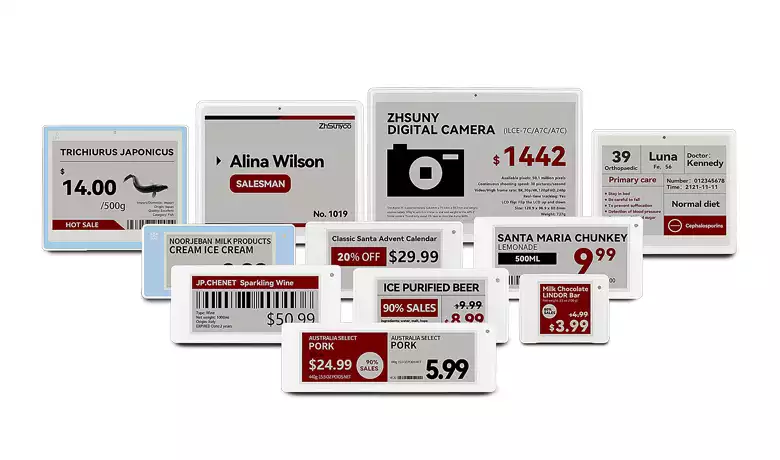Electronic Shelf Labels (ESLs) have already proven their value in retail by automating price changes, cutting labour costs, and improving accuracy. But as retail technology advances, ESL systems must evolve into smart, multi-functional platforms that enhance both operations and the shopper experience.
1. Dynamic Pricing with AI Integration
-
Next step: ESLs should integrate directly with AI-driven pricing engines.
-
Impact: Real-time adjustments based on demand, competitor pricing, weather conditions, or expiration dates. For example, bakery items could drop in price toward the end of the day to reduce waste.
-
Benefit: Boosts margin optimisation while reducing food waste.
2. Personalised Shopper Engagement
-
Next step: ESLs equipped with NFC or QR codes that link with loyalty apps.
-
Impact: Shoppers could tap their phone to see personalised discounts, recipe suggestions, or sustainability scores.
-
Benefit: Bridges the gap between physical shelves and digital engagement.
3. Sustainability and Supply Chain Transparency
-
Next step: ESLs displaying product origin, carbon footprint, or supply chain traceability.
-
Impact: Increases transparency for eco-conscious shoppers, especially Gen Z and Millennials.
-
Benefit: Retailers position themselves as sustainable and trustworthy.
4. Real-Time Inventory Visibility
-
Next step: ESLs connected directly to stock management systems.
-
Impact: Labels could indicate stock levels (“Only 3 left!”) or direct staff to restock quickly.
-
Benefit: Reduces out-of-stock frustration and improves on-shelf availability.
5. Omnichannel Integration
-
Next step: Synchronising ESLs with online pricing and promotions.
-
Impact: Shoppers in-store see exactly the same price as online, reducing confusion.
-
Benefit: Consistency builds trust and drives seamless omnichannel experiences.
6. In-Store Navigation & Smart Shopping
-
Next step: ESLs paired with mobile apps or store maps.
-
Impact: Customers could follow digital guidance to find products, while labels highlight promotions or dietary tags (gluten-free, vegan, low-sugar).
-
Benefit: Enhances shopper convenience and reduces time spent searching.
7. Energy-Efficient and Smarter Displays
-
Next step: Development of solar-powered ESLs or ultra-low-energy e-ink models.
-
Impact: Large retailers could reduce energy usage across thousands of labels.
-
Benefit: Significant operational savings and greener store footprints.
8. Analytics and Heat Mapping
-
Next step: ESLs integrated with IoT sensors to track product interaction and shelf activity.
-
Impact: Retailers gain real-time insights on customer behaviour, dwell times, and promotion effectiveness.
-
Benefit: Data-driven decision-making for planograms, pricing, and merchandising.

